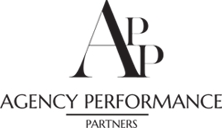How to Sell Insurance Introduction
At APP our definition of sales is finding solutions to insurance problems that the prospect knows they have but also consulting with them to explore unknown risks and provide solutions.
When we use certain words like role-playing, burpees, or taxes immediately we react. Now, when the word sales comes up for many people we think – pushy, slimy, and uncomfortable.
However, the reality is that the best sales professionals are educators. They listen, gather information find solutions, and then present them passionately so the buyer can make a final decision that is best for them.
As we explore in this blog our steps on how to sell insurance we want you to always be routed in a few core concepts:
- Always be an educator first
- Agency standards help us all focus on the right business
- You have to sell value and yourself first
- Speed is a factor in boosting closing ratios
- Sales is helping people
We will walk you through the key steps that you need to embrace to have a successful sales process. Now, it is important to note many agencies have a quoting process. The quoting process is part of a sales process.
You can’t sell insurance without quoting it. However, a quoting process tends to be more technical. With a sales process, we are focused on how we make the client feel to encourage them to purchase from us first and foremost.
Key Steps In How To Sell Insurance
Any good process is broken down into simple and easy-to-execute steps. Now you may be thinking of a 10-step sales process – ohh my!
However, as we break down each of these steps you will see that they are baby steps that all add up to a successful and easy close and most importantly a long-term and satisfied client that can help you earn referrals.
- Step 1: Building Rapport
- Step 2: Finding Pain Points
- Step 3: Qualifying Your Opportunity
- Step 4: Gathering Quote Information & Setting Expectations
- Step 5: Quoting Plan
- Step 6: Presenting The Quote & Asking For the Bind
- Step 7: Embracing & Overcoming Objections Part 1
- Step 8: Follow Up, Breakup & Recycle
- Step 9: Referrals, Rounds & Service Efficiency
- Step 10: Filling Your Pipeline
We recommend you review this blog but then go back and embrace one step at a time on how to sell insurance.
Building Rapport
In alignment with moving into a sales process more than a quoting process, how we start the interaction is absolutely critical.
Too many agents pull out the quote sheet and start an interrogation rather than a sales process.
Instead, you want to start with 2-3 minutes of building value first. We have to get very well-rooted that prospects do not know what we don’t tell them. So our first step is to build value over price.
Rather than diving into the year, make, model, revenue, etc. let’s start with identifying who the prospect is and share a bit on how we help people just like them! In building rapport we must treat the person like a person, not a policy.
When we become likable to the lead they are more likely to purchase from us. People talking about themselves is the first step to building rapport and trust.
Here are some key insurance rapport-building questions we like to ask:
- How did you hear about us? (hint if a referral asks who and recognizes them!)
- What is important to you in selecting your agent?
- Why are you shopping today?
- Do you have any other policies with other agents?
- May I research all the discounts you may qualify for?
- When are you looking to make your final decision?
This allows open-ended question dialog. You want to listen to gather key details, your goal is to not underwrite but instead put your sales hat on here.
In addition, we would be remiss in not adding here that you need to make sure to clearly discuss with the lead why your agency is the best to work with as well as your personal experience.
Remember, leads do not know what we don’t tell them so you need to start the value discussion right now upfront.
Finding Pain Points
Many agents assume everyone is shopping for their insurance to save money. However, is that true? It’s generally part of the reason but generally not the only or main reason.
Our strategy in how to sell insurance is to identify that price is the straw that breaks the camel’s back. Meaning that if they are looking based on price and did not call their current agent the reality is something else is triggering them.
This can be indifference, lack of service, or not having a clear and or great answer from their current agent.
Part of the rapport building is to identify if the client is receiving WOW Customer Service from their current agent. As we are building rapport our goal is to find 2-3 pain points you can focus on with the prospect.
Part of this strategy in how to sell insurance is to stack the deck in your favor. When you quote the policy and find out that your pricing is about the same or a negligible amount higher or lower you will need to be able to explain that for about the same amount of money, they will get more value and that is the reason to make the switch.
Common pain points include:
- Didn’t know their agent was independent and had options or they were captive
- Lack of service
- Difficult claims experience
- Consistent price increases
Qualifying Your Opportunity
Bad lead bad client. It’s important to be very clear on who the agency’s ideal client is. When we have no standards we tend to attract the worst customers. Having standards allows you to focus on the clients who do want the value you bring to the table.
We often challenge agents whether they need more leads or better clients. The better clients have more premium and also are easier to deal with efficiently on the service side.
Many agents feel that if we have a market we should write it. We take a different approach. The agency creates their standards and those reign supreme over what you could write with the carriers you represent.
Here are some items you may want to qualify based on:
- How they prefer to pay (we want EFT/ACH or pay in full)
- Monoline
- Current coverage
- Willing to provide information
- Type of risk
If it’s not something that your agency will write the best bet is to end the call now and assist the prospect with where they may be able to find coverage. Do not try to stretch too far to get a square peg to fit a round hole.
Also, make sure you do this after you build rapport. Some people may be more guarded up front so by working through building rapport they build trust and respect for you first.
Gathering Quote Information and Setting Expectations
We are now moving to integrating a quoting process with an insurance sales process. You still need to keep your sales and education hat on and not dive straight into underwriting.
You do need to gather a lot of information to obtain an accurate and bindable quote.
We recommend agencies either have a uniform quote sheet or practice direct entry into the rater or carrier website. For personal lines, we recommend the rater over the carrier.
We have a few reasons for this:
- Carrier website quotes are not saved forever
- When the quote is in the rater it is easier to retarget if you do not win the sale
- If the lead becomes a client it’s in the rater and easier for the team to remarket in the future
When you have a quote sheet your sale will be more structured and you won’t forget key information! We all thought we grabbed everything and then we tried to quote the opportunity only to find we had to call the lead again.
Quote sheets are the way to make sure you are gathering all of the right underwriting information.
As you gather underwriting information you want to try to expedite the process. There is the idea we have to be thorough but also efficient. In order to be efficient see if you can find the property on Zillow or the tax assessor’s website.
There is also the opportunity to pull up a business website. We recommend pulling these items up and confirming the information rather than asking for all the details.
If the client doesn’t have all of the details make sure you have a clear plan on how and when the client will provide you the information.
One key step you need to embrace is setting expectations. If you are not going to be able to do direct entry and quoting over the phone you must make sure that you set an appointment with the client to manage your time and the client’s time.
Appointments are your friend. In addition, if you can meet with the client in person or via a video call you will see an increase in your closing ratio!
Presenting The Quote and Asking For the Bind
One big part of how to sell insurance is how to present the quote. Every industry’s sales process has a presentation and closing. In insurance, we don’t always present the quote as professionally as I believe we can.
Too many agents email the carrier quote and then call the client. Instead, lean on that appointment!
When you present the quote we have a defined format we educate agents to follow:
- Reconnect with the lead
- Reassure them you have a strong quote and can solve their problems
- Educate them on the carrier you selected and why
- Present 2-3 coverage options (this allows your client to see that a small insurance investment can lead to a great deal of coverage)
- Discuss the insurance premiums
- Ask the client which option the client would prefer
- Find out how they want to set up payment
Presenting quote options is critical. This allows the person to experience that you have options and can help you build the right policy together.
In addition, options allow you to get a soft yes as the client selects which option they are leaning toward. This allows you to go into the close!
In our insurance sales process we also encourage you not to discuss price until you have shown the value and coverage. The second you share the price the client has control over the sale. You want to share all your value then price.
Embracing & Resolving Concerns (Overcoming Objections)
At this point you want your client to express their concerns, if they have them. I think too many sales professionals want to send the client the quote to review it and get off the phone.
Instead, let’s get off the phone when we have a yes or a clear reason why the opportunity needs to wait or if this is not for them. One of our biggest new objections that we have to overcome is getting ghosted.
This comes from when the client doesn’t respect you enough to let you know their decision – we must stop this!
Rather than run from insurance objections embrace them! Most objections you are able to work through if you know about them and you can have strength in refuting them.
When a client is struggling to move forward with you we want to have you keep them talking. If you get off the phone there is a high likelihood that the person won’t move forward. Keep working at it! You may get them to say yes to take it off their plates.
If you need help overcoming objections check our Insurance Sales Training Course and live training options.
Follow Up, Break Up & Recycle
The goal is to close the sale during the quote presentation. From time to time either you may miss a step or the person just will not move forward.
You need a clearly repeatable process for what to do when we can’t close on the presentation call. For this reason, we encourage everyone to have a clear plan of when to walk away and recycle the lead.
Follow Up
In our consulting and training work, we find very low follow-up. Either agents get productive with other leads, they don’t want to seem pushy or only follow up via email. We believe that you need to outline your lead follow-up expectations clearly.
A few follow-up tips we have for agents are:
- Follow-up needs to be phone, email, and text
- Follow-up needs to be consistent every 2-3 days
- Follow-up starts with an agreed-upon time and date with the client
- You need to follow up at least 3 times, ideally 6
Break Up
There are some prospects that after all the follow up you will still have to break up with them. What this means is that you have to take your love away!
Moving on to the next lead is empowering but it also forces some leads who are non-responsive to peak back up! All you have to do is let the client know the following: “If I don’t hear from you by Friday I will have to close your file.
Please let me know if you would like to move forward.” Then bam 20-30% of the opportunities will come back around!
Recycle
If after all that the lead doesn’t close and it’s qualified for the agency it’s time to recycle it. Maybe the lead stays with their current agent or maybe they select a new agent.
The bottom line is that every relationship changes every 3-5 years. You want to be there when they need a great agent. In addition, you have all of the information so this is a very efficient new lead.
You will need to take the high-value target and make sure you have a reminder to start contacting them 60 days before their renewal.
Filling Your Pipeline
The final step is how to fill your pipeline. Each producer may use a variety of lead generation sources; there is everything from buying leads to working certificate requestors. Here are the APP lead generation favorites:
- Referrals – ask, ask, ask
- Lost customers who are qualified
- Recycled unsold quotes
- Networking events
- Certificate requesters
- Building SEO for website leads
- Centers of Influence
Make sure you have 3-5 lead sources at all points in time since you want to have only some of your lead eggs in one basket!
How to Sell Insurance Conclusion
Winging your sales is not an option! Having a consistent and effective sales process helps you identify potential challenges to tackle. Also, once you get the process down it becomes much easier!
You can get into a rhythm and close, close, close!







